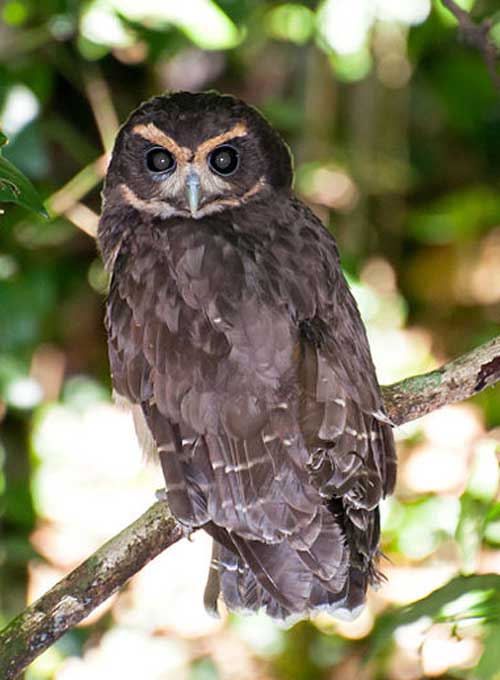
Pulsatrix koeniswaldiana (*)
Superregnum: Eukaryota
Cladus: Unikonta
Cladus: Opisthokonta
Cladus: Holozoa
Regnum: Animalia
Subregnum: Eumetazoa
Cladus: Bilateria
Cladus: Nephrozoa
Superphylum: Deuterostomia
Phylum: Chordata
Subphylum: Vertebrata
Infraphylum: Gnathostomata
Megaclassis: Osteichthyes
Cladus: Sarcopterygii
Cladus: Rhipidistia
Cladus: Tetrapodomorpha
Cladus: Eotetrapodiformes
Cladus: Elpistostegalia
Superclassis: Tetrapoda
Cladus: Reptiliomorpha
Cladus: Amniota
Classis: Reptilia
Cladus: Eureptilia
Cladus: Romeriida
Subclassis: Diapsida
Cladus: Sauria
Infraclassis: Archosauromorpha
Cladus: Crurotarsi
Divisio: Archosauria
Cladus: Avemetatarsalia
Cladus: Ornithodira
Subtaxon: Dinosauromorpha
Cladus: Dinosauriformes
Cladus: Dracohors
Cladus: Dinosauria
Cladus: Saurischia
Cladus: Eusaurischia
Subordo: Theropoda
Cladus: Neotheropoda
Cladus: Averostra
Cladus: Tetanurae
Cladus: Avetheropoda
Cladus: Coelurosauria
Cladus: Tyrannoraptora
Cladus: Maniraptoromorpha
Cladus: Maniraptoriformes
Cladus: Maniraptora
Cladus: Pennaraptora
Cladus: Paraves
Cladus: Eumaniraptora
Cladus: Avialae
Infraclassis: Aves
Cladus: Avebrevicauda
Cladus: Pygostylia
Cladus: Ornithothoraces
Cladus: Ornithuromorpha
Cladus: Carinatae
Parvclassis: Neornithes
Cohors: Neognathae
Cladus: Neoaves
Ordo: Strigiformes
Familia: Strigidae
Subfamilia: Striginae
Genus: Pulsatrix
Species: Pulsatrix koeniswaldiana
Name
Pulsatrix koeniswaldiana (M. Bertoni & W. Bertoni, 1901)
Synonyms
Syrnium koeniswaldianum (protonym)
References
Primary references
Bertoni, A. de W. 1901. Aves nuevas del Paraguay: Continuación á Azara. Anales Científicos Paraguayos. 1–216. Asunción, Paraguay: Talleres Nacionales de H. Kraus. BHL. DOI: 10.5962/bhl.title.13398 Reference page. p. 175 BHL
Vernacular names
English: Tawny-browed Owl
español: Lechuzón acollarado chico
português: Murucututu-de-barriga-amarela
The tawny-browed owl (Pulsatrix koeniswaldiana) is a species of owl in the family Strigidae. It is found in Argentina, Brazil, and Paraguay.[3]
Taxonomy and systematics
The tawny-browed owl may form a superspecies with band-bellied owl (Pulsatrix melanota). It has been suggested that they are conspecific but they have different morphology and vocalizations. It is monotypic.[4][3]
Description
The tawny-browed owl is about 44 cm (17 in) long. Males weigh 405 to 562 g (14.3 to 19.8 oz) and females 331 to 670 g (11.7 to 23.6 oz). It has a brown facial disk surrounded by ochre, a white chin patch, and creamy "brows" over chestnut-brown eyes. Its breast, upperparts, and tail are dark chocolate brown, and the tail has white bars. The belly is buff and the rest of the underparts are light ochre. The juvenile is initially almost entirely white and gradually attains adult plumage over several years.[5]
Distribution and habitat
The tawny-browed owl is found in Brazil from Espírito Santo state south to northern Rio Grande do Sul and the immediately adjacent areas of eastern Paraguay and northeastern Argentina. It inhabits humid tropical forest, open woodland, and forest dominated by Araucaria evergreens. In elevation it ranges from sea level to about 1,500 m (4,900 ft).[5]
Behavior
Feeding
The tawny-browed owl is nocturnal. It hunts in the canopy from a perch, taking small mammals, birds, large insects, and probably other small vertebrates.[5]
Breeding
The tawny-browed owl's breeding phenology has been poorly studied. Its nesting season has not been determined. The clutch size is usually two, laid in a tree cavity, and incubated by the female. Both parents care for fledged young.[5]
Vocalization
Dickcissel male perched on a metal pole singing, with neck stretched and beak open.
Songs and calls
Listen to tawny-browed owl on xeno-canto
The male tawny-browed owl makes a "[l]ow, descending sequence of guttural, ventriloquial 'brrr brrr brrr brrr' or 'ut ut ut ut ut' notes, accelerating and weaker at [the] end", to which the female responds with a higher pitched call.[5]
Status
The IUCN has assessed the tawny-browed owl as being of Least Concern.[1] Its population size has not been determined, and it is thought to be "relatively rare, or at best uncommon". It occurs in some protected areas, but its Atlantic Forest habitat has been much reduced and fragmented.[5]
References
BirdLife International (2018). "Tawny-browed Owl Pulsatrix koeniswaldiana". IUCN Red List of Threatened Species. 2018. Retrieved 7 September 2021.
"Appendices | CITES". cites.org. Retrieved 2022-01-14.
Gill, F.; Donsker, D.; Rasmussen, P. (July 2021). "IOC World Bird List (v 11.2)". Retrieved July 14, 2021.
Remsen, J. V., Jr., J. I. Areta, E. Bonaccorso, S. Claramunt, A. Jaramillo, D. F. Lane, J. F. Pacheco, M. B. Robbins, F. G. Stiles, and K. J. Zimmer. Version 24 August 2021. A classification of the bird species of South America. American Ornithological Society. https://www.museum.lsu.edu/~Remsen/SACCBaseline.htm retrieved August 24, 2021
Holt, D. W., R. Berkley, C. Deppe, P. L. Enríquez, J. L. Petersen, J. L. Rangel Salazar, K. P. Segars, K. L. Wood, E. de Juana, and J. S. Marks (2020). Tawny-browed Owl (Pulsatrix koeniswaldiana), version 1.0. In Birds of the World (J. del Hoyo, A. Elliott, J. Sargatal, D. A. Christie, and E. de Juana, Editors). Cornell Lab of Ornithology, Ithaca, NY, USA. https://doi.org/10.2173/bow.tabowl1.01 retrieved September 7, 2021.
Retrieved from "http://en.wikipedia.org/"
All text is available under the terms of the GNU Free Documentation License

